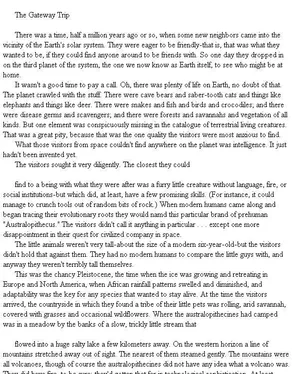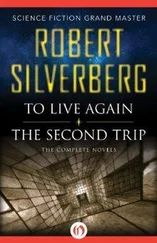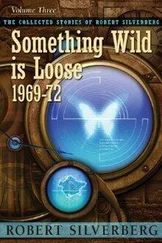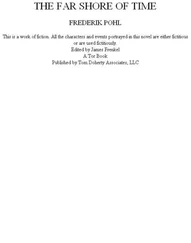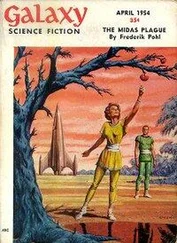Pohl, Frederik - The Gateway Trip
Здесь есть возможность читать онлайн «Pohl, Frederik - The Gateway Trip» весь текст электронной книги совершенно бесплатно (целиком полную версию без сокращений). В некоторых случаях можно слушать аудио, скачать через торрент в формате fb2 и присутствует краткое содержание. Жанр: Старинная литература, на английском языке. Описание произведения, (предисловие) а так же отзывы посетителей доступны на портале библиотеки ЛибКат.
- Название:The Gateway Trip
- Автор:
- Жанр:
- Год:неизвестен
- ISBN:нет данных
- Рейтинг книги:4 / 5. Голосов: 1
-
Избранное:Добавить в избранное
- Отзывы:
-
Ваша оценка:
- 80
- 1
- 2
- 3
- 4
- 5
The Gateway Trip: краткое содержание, описание и аннотация
Предлагаем к чтению аннотацию, описание, краткое содержание или предисловие (зависит от того, что написал сам автор книги «The Gateway Trip»). Если вы не нашли необходимую информацию о книге — напишите в комментариях, мы постараемся отыскать её.
The Gateway Trip — читать онлайн бесплатно полную книгу (весь текст) целиком
Ниже представлен текст книги, разбитый по страницам. Система сохранения места последней прочитанной страницы, позволяет с удобством читать онлайн бесплатно книгу «The Gateway Trip», без необходимости каждый раз заново искать на чём Вы остановились. Поставьте закладку, и сможете в любой момент перейти на страницу, на которой закончили чтение.
Интервал:
Закладка:
There were five of the Grantlands-two brothers, their wives, and the eldest son of one of the couples. They reached a globular cluster-ten thousand old stars, mostly red, mostly sliding toward the sunset at the lower right side of the Hertzspung-Russell diagram as they aged. The cluster was in the galactic halo and, of course, the trip was a long one. None of them survived. The trip took 314 days, and all of them were alive at the time of arrival (but existing on scant rations). They took their pictures. The last of them, the young second wife of one of the brothers, died thirty-three days into the return trip; but the pictures they had taken survived.
The three Schoen sisters were no luckier. They didn't come back at all, either. Again, their ship did, but thoroughly racked and scorched, and of course their bodies inside were barely recognizable.
But they, too, had taken a few pictures before they died. They had been in a reflection nebula-after analysis it was determined that
it was the Great Nebula in Orion, actually visible to the naked eye from Earth. (American Indians called it "the smoking star.") The Schoen sisters must have known they were in trouble as soon as they came out of drive, because they weren't really in space anymore. Oh, it was close to a vacuum-as people on Earth measure a vacuum-but there were as many as three hundred atoms to the cubic centimeter, hundreds of times as many as there should hav~ been in interstellar space.
Still, they looked around, and they started their cameras-just barely. They didn't have much time.
There are four bright young stars in the Orion Nebula, the so-called Trapezium; it is in such nebulae that gas clouds fall together and are born as stars. Astronomers conjectured that the Heechee knew this, and the reason the ship had been set to go there was that Heechee astronomers had been interested in studying the conditions that lead to star formation.
But the Heechee had set that program half a million years before.
A lot had happened in those half million years. There was now a fifth body, an "almost" star, in the Orion Nebula, formed after the Heechee had taken their last look at the area. The new body was called the Becklin-Neugebauer object; it was in its early
hydrogen-burning stage, less than a hundred thousand years old. And it seemed that the Schoen sisters had the bad luck to come almost inside it.
MISSION NAKED BLACK HOLE
The crew was William Sakyetsu, Marianna Morse, Hal M'Buna, Richard Smith, and Irma Malatesta. All of them had been Out before-Malatesta had done it five times-but luck hadn't favored any of their ventures. None of them had yet made a big enough score to pay their Gateway bills.
So for their mission they were careful to choose an armored Five with a record of success. The previous crew in that ship had earned a "nova" science bonus in it, managing to come close enough to a recurring nova to get some good pictures, though not so close that they didn't live through the experience. They had collected a total of seven and a half million dollars in bonus money and had gone back to Earth, rejoicing. But before they left they gave their ship a name. They called it Victory.
When Sakyetsu and the others in his crew got to their destination they looked for the planet-or the star, or the Heechee artifact, or the object of any interesting sort-that might have been its target.
They were disappointed. There wasn't anything like that to be found anywhere around. There were stars in sight, sure. But the nearest of them was nearly eight light-years away. By all indications they had landed themselves in one of the most boringly empty regions of interstellar space in the galaxy. They could not find even a nearby gas cloud.
They didn't give up. They were experienced prospectors. They spent a week checking out every possibility. First, they made sure they hadn't missed a nearby star: with interferometry they could measure the apparent diameter of some of the brighter stars; by spectral analysis they could determine their types; combining the two gave them an estimate of distance.
Their first impression had been right. It was a pretty empty patch of sky they had landed in.
There was, to be sure, one really spectacular object in view-the word Marianna used was "glorious"-a globular cluster, with thousands of bright stars interweaving their orbits in a volume a few hundred light-years across. It was certainly spectacular. It dominated the sky. It was much nearer to them than any such object had ever been to a human eye before. But it was still at least a thousand light-years away.
A globular cluster is an inspiring sight. It was a long way from Sakyetsu and his ship Victory, but by the standards of Earthly astronomers that was nothing at all. Globular clusters live on the outer fringe of the galaxy. There aren't any in the crowded spiral-arm regions like the neighborhood of Earth. There are almost none less than twenty thousand light-years from Earth, and here was one a twentieth as far-and thus, by the law of inverse squares, four hundred times as bright. It was not an unusually large specimen, as globular clusters go; the big ones run upward of a million stars, and this one was nowhere near that. It was big enough to be exciting to look at, all the same.
But it was neither big enough nor near enough for Victory's instruments to reveal any more than Earth's own orbiting observatories, with their far more powerful mirrors and optical systems, had seen long ago.
So there was very little chance that the instruments on Victory could earn them any kind of decent bonus. Still, those instruments were all they had. So the crew doggedly put them to work. They photographed the cluster in red light, blue light, ultraviolet light, and several bands of the infrared. They measured its radio flux in a thousand frequencies, and its gamma rays and X-rays. And then, one sleeping period, while only H~tl M'Buna was awake at the instruments, he saw the thing that made the trip worthwhile.
His shout woke everybody up. "Something's eating the cluster!"
Marianna Morse was the first to get to the screens with him, but the whole crew flocked to see. The fuzzy circle of the cluster wasn't a circle anymore. An arc had been taken out of its lower rim. It looked like a cookie a child had bitten into.
But it wasn't a bite.
As they watched, they could see the differences. The stars of the cluster weren't disappearing. They were just, slowly, moving out of the way of-something.
"My God," Marianna whispered. "We're in orbit around a black hole."
Then they cursed the week they had wasted, because they knew what that meant. Big money! A black hole. One of the rarest objects (and, therefore, one of the most highly rewarded in science bonuses) in the observable universe-because black holes are, intrinsically, unobservable.
A black hole isn't "black," in the sense that a dinner jacket or the ink on a piece of paper is black. A black hole is a lot blacker than that. No human being has ever seen real blackness, because blackness is the absence of all light. It can't be seen. There is nothing to see. The blackest dye reflects a little light; a black hole reflects nothing at all. If you tried to illuminate it with the brightest searchlight in the universe-if you concentrated all the light of a quasar on it in a single beam-you would still see nothing. The tremendous gravitational force of the black hole would suck all that light in and it would never come out again. It can't.
It is a matter of escape velocity. The escape velocity from the Earth is seven miles a second; from a neutron star as much as 120,000 miles per second. But the escape velocity from a black hole is greater than the speed of light. The light doesn't "fall back" (as a rock thrown up from Earth at less than escape velocity will fall back to the ground). What happens to the light rays is that they are bent by the gravitational pull. The radiation simply circles the black hole, spiraling endlessly, never getting free.
Читать дальшеИнтервал:
Закладка:
Похожие книги на «The Gateway Trip»
Представляем Вашему вниманию похожие книги на «The Gateway Trip» списком для выбора. Мы отобрали схожую по названию и смыслу литературу в надежде предоставить читателям больше вариантов отыскать новые, интересные, ещё непрочитанные произведения.
Обсуждение, отзывы о книге «The Gateway Trip» и просто собственные мнения читателей. Оставьте ваши комментарии, напишите, что Вы думаете о произведении, его смысле или главных героях. Укажите что конкретно понравилось, а что нет, и почему Вы так считаете.
